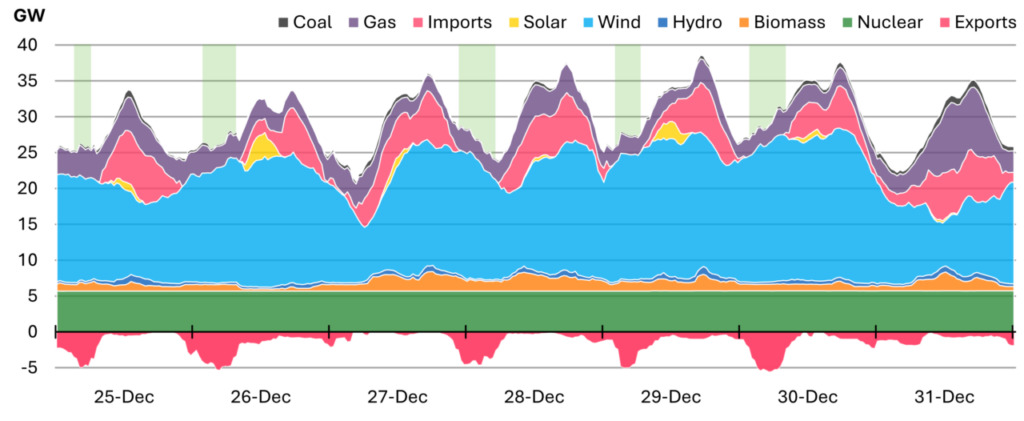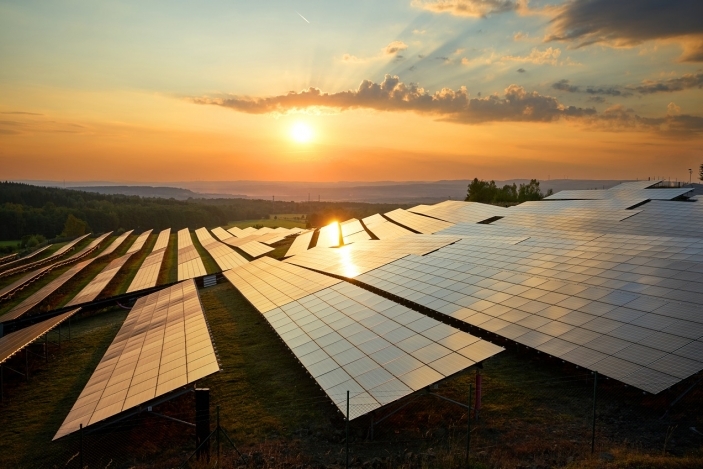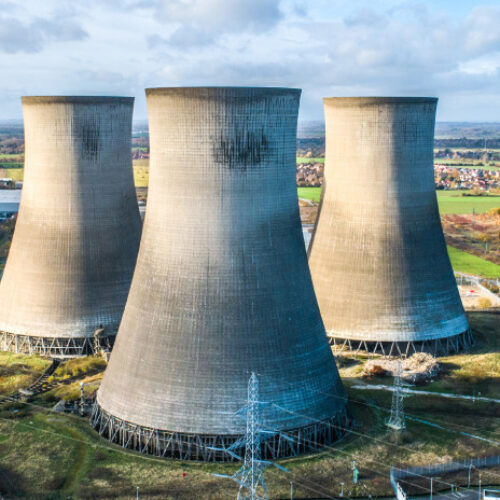Britain has broken its record for ‘greening the grid’, with 25 hours coming from 100% clean electricity in December, according to new analysis from Imperial College London for Drax Electric Insights.
This is one of the key findings from the the Drax Electric Insights Q4 2022 report, which suggests that there was 2.9GW of surplus clean power – that sourced from biomass, hydro, wind, solar and nuclear – generated in December.
Despite this surplus generation, the need for inertia and flexibility meant that fossil fuel generation was still required during this period, but that the minimum safe amount of fossil fuels is continuously falling. This is helping the country move towards periods of totally net zero electricity generation by 2025, in line with National Grid ESO’s target.

The report found that during 2022 as a whole there were nearly 100 hours where the grid delivered more clean power than it needed.
“Britain’s power grid has undergone a remarkable transformation over the last decade with surplus clean electricity having switched from being a pipe dream to becoming a reality. Electricity is the only form of energy where we produce more than we consume – in comparison to our coal and gas requirements where 60-75% are still imported from abroad,” said Dr Iain Staffell of Imperial College London, and lead author of the quarterly Drax Electric Insights report.
“Completely eliminating fossil fuels during periods of high renewable output and low demand in the next two years requires significant policy and infrastructure decisions to be made now. Having a new Department for Energy Security and Net Zero is a positive step to focus government attention on this and other key targets, such as delivering the large amount of carbon removals from bioenergy with carbon capture and storage (BECCS) that will make a critical contribution to its legally binding decarbonisation targets.”
The report notes that 2022 was “an exceptional and record-breaking year” for Britain’s power system for both good and bad reasons. Electricity prices rose by a further 75% from the already high levels for 2021, leaving 8 million households in fuel poverty.
But renewables also grew to their highest ever share of electricity production, forcing carbon emissions down again after they rebounded in the previous year as a result of the economy restarting following COVID-19 lockdowns.
Additionally, electric heat pumps are becoming more mainstream, the report notes, with major energy companies like British Gas and Octopus Energy launching increasingly cost-efficient offerings.
Similarly the popularity of electric vehicles (EVs) continued to grow in 2022, with sales reaching a record high of one in three new cars sold being electric in December. EVs are set to overtake petrol and diesel car sales in just two years’ time at this rate.
Find out more about the key energy trends of Q4 and 2022 as a whole in Drax Electric Insights Q4 2022 report here.





